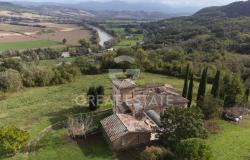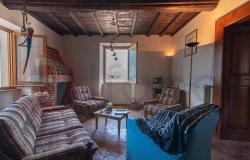Words by Pat Eggleton
If you are going to be in the Rome area on the first Sunday in October, there is wonderful, free entertainment and the opportunity to taste, free of charge, some fantastic wine at the Sagra dell’Uva [Grape Festival] in Marino [Lazio].
 Marino is a medieval town 21 kilometres south of Rome in the Castelli Romani area. It was a summer resort for the Roman nobility, who built luxurious villas there and the area has been famous for its wine since that time.
Marino is a medieval town 21 kilometres south of Rome in the Castelli Romani area. It was a summer resort for the Roman nobility, who built luxurious villas there and the area has been famous for its wine since that time.
The neighbouring hillside is Frascati and the wine produced comes mainly from Malvasia and Trebbiano grapes. It is the colour of straw. In the Middle Ages Marino was a fiefdom of both the Frangipane and the Orsini families.
On 7th October 1571 the town welcomed Marcantonio Colonna, a general of the Lazio family who fought in the Battle of Lepanto with 260 of the town’s citizens. In 1925 the marinese poet Leone Ciprelli, [1873 – 1953] who wrote in dialect and was very aware of dying traditions, had the idea of holding a grape festival to celebrate this event.
 When you arrive in Marino on Grape Festival Day you will see that all the balconies are decorated with flowers and the statues guarding the fountains have grapes in their mouths and adorning their private parts. This is a good indicator of the happy atmosphere.
When you arrive in Marino on Grape Festival Day you will see that all the balconies are decorated with flowers and the statues guarding the fountains have grapes in their mouths and adorning their private parts. This is a good indicator of the happy atmosphere.
In the morning there is a religious procession to thank the Madonna del ss Rosario. Then, in the afternoon, there is a re-enactment of the return of Marcantonio Colonna. About 400 people dressed in period costume take part and there is also a jousting tournament.
At last, at around 5pm, comes the moment everyone has been waiting for: there is a blessing and then the main fountain of the town begins to flow with golden wine instead of water. This is always hailed as a miracle. Grapes and wine are distributed freely to the crowd and it is a good idea to take some plastic cups with you!
 In 2008 there was an embarrassing technical error and, as the Mayor and dignitaries held their glasses out for a first taste of the wine from the fountain, there was consternation and disappointment when water was poured instead. Suddenly there was a cry of “Miracolo!” from a nearby house and a woman shouted from her balcony that wine was flowing from her kitchen tap. There were red faces all around but you can be sure that the citizens enjoyed themselves.
In 2008 there was an embarrassing technical error and, as the Mayor and dignitaries held their glasses out for a first taste of the wine from the fountain, there was consternation and disappointment when water was poured instead. Suddenly there was a cry of “Miracolo!” from a nearby house and a woman shouted from her balcony that wine was flowing from her kitchen tap. There were red faces all around but you can be sure that the citizens enjoyed themselves.
In the afternoon and evening there are tasting stands and all the cantine [wine cellars] of the town are open. In these you can buy simple food such as spit-roasted pork and soft bread but you can consume your own food in the cantine provided you purchase wine. There are also cultural events and everyone enjoys music and dancing.
If you are going to attend this festival you should be aware that, although tourists are welcome, it is not a show put on for their benefit. The Marino Grape Festival is a very “real” celebration for the town and things can get rowdy, particularly in the evening.
 On the following Sunday there is another festival, the Sagra della Ciambella al mosto. The ciambella al mosto is a sort of bun made from raisins, grape skins and other residue from the grape pressings. The recipe dates back to the seventeenth century.
On the following Sunday there is another festival, the Sagra della Ciambella al mosto. The ciambella al mosto is a sort of bun made from raisins, grape skins and other residue from the grape pressings. The recipe dates back to the seventeenth century.
While you are in Lazio, why not let Rome Urban Adventures take care of your sightseeing needs in the city? The company organises group walking tours such as “Roman Dolce Vita” , taking in the Spanish Steps, Piazza Navona, the Pantheon, Trevi Fountain and Via Condotti. It is very reasonably priced and you will walk through side streets that you would not normally explore. The company also organises a “Roman Empire Then and Now” tour which will enable participants to discover both ancient and modern Rome.













